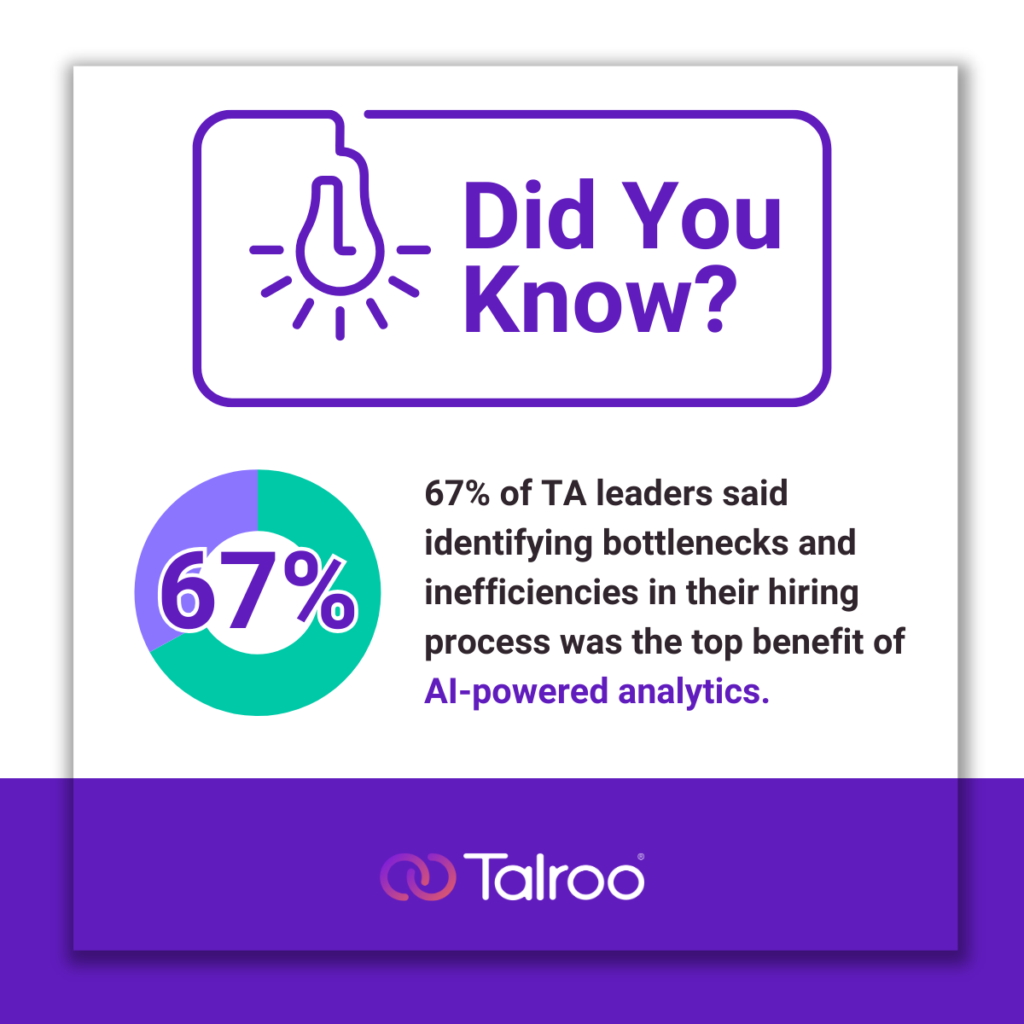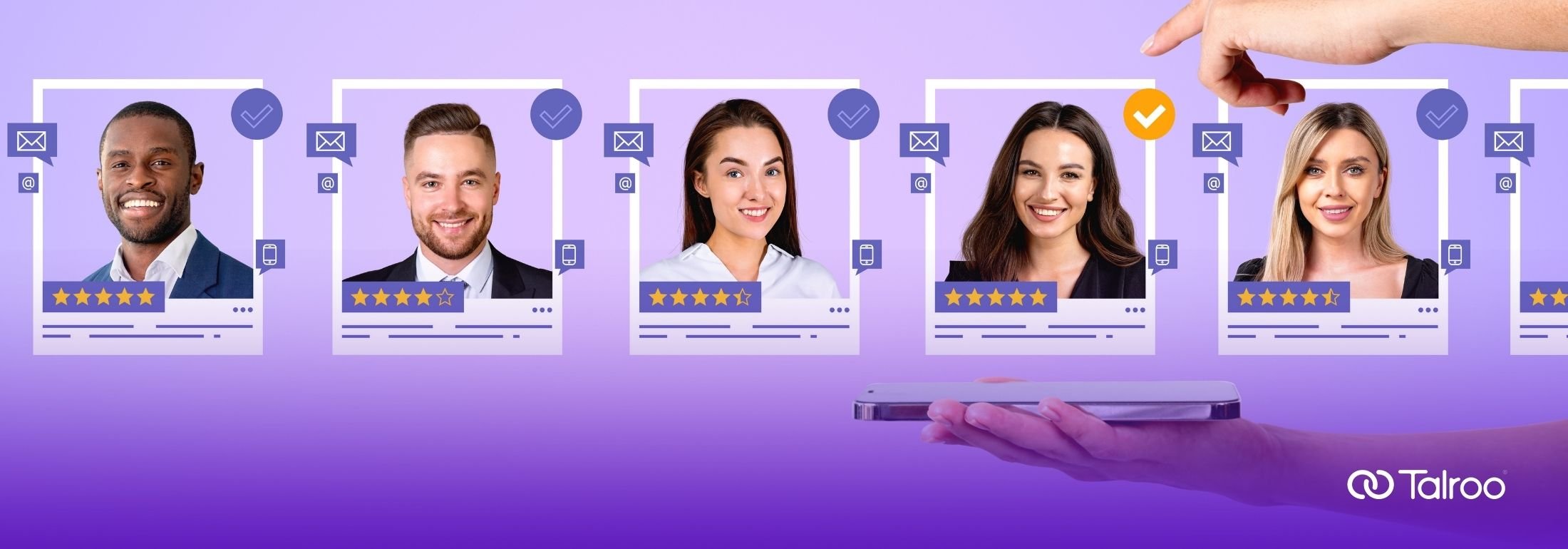
Using AI to Analyze Recruiting Data and Metrics
Talent acquisition (TA) leaders are sitting on a goldmine—and no, we’re not talking about compensation budgets or fancy job titles. We’re talking about data. Every application, interview, hire, and exit produces information that can help shape smarter hiring decisions. But let’s be real—raw data alone isn’t helpful. Without the right tools, insights remain buried under a mountain of spreadsheets. That’s where artificial intelligence (AI) comes in.
Unlocking the Power of Data-Driven Talent Acquisition
AI-powered analytics are transforming how organizations collect, interpret, and act on recruiting metrics. By automating data analysis and offering real-time, actionable insights, AI empowers TA teams to optimize hiring strategies, improve candidate experiences, and even predict future workforce needs.
Let’s dig into how AI enhances recruiting through smarter data analysis—and what you need to know to use it ethically and effectively.
Automating Data Collection and Integration
Traditional recruiting data analysis can be time-consuming and fragmented. You’re pulling reports from your applicant tracking system (ATS), HRIS, CRM, survey tools, and job boards—and that’s before you’ve even opened Excel.
AI simplifies this chaos by automating data collection across platforms. Modern AI tools can aggregate and standardize data from multiple sources, offering recruiters a centralized view of key metrics. This not only saves time but reduces human error and enables faster, data-informed decisions.
For example, AI can track time-to-fill, source-of-hire, and cost-per-hire across departments or locations automatically. It can also continuously update dashboards in real time, giving TA leaders a live snapshot of pipeline health and recruitment funnel efficiency.
Pro tip: Integrating AI analytics tools with your ATS, other agentic AI tools and tech, or recruitment marketing platform is a great first step toward centralizing data without adding administrative overhead.
Real-Time Dashboards for Smarter Decision-Making
Gone are the days of waiting until month’s end to analyze hiring metrics. AI-driven dashboards provide real-time visibility into everything from candidate conversion rates to job ad performance.
Many hiring platforms offer dashboards that track metrics such as candidate engagement, hiring velocity, and source performance in real time. These insights help recruiting teams make data-informed adjustments throughout the hiring process, such as refining sourcing strategies, updating job descriptions, or prioritizing high-potential candidates.
Similarly, LinkedIn’s AI-powered recruiter platform uses intelligent insights to suggest optimal outreach times and candidate matches, improving recruiter productivity and response rates.
Identifying Hiring Trends and Gaps
One of the most valuable contributions of AI in recruiting analytics is the ability to detect patterns over time. Want to know which departments take the longest to hire? Or whether your job ads resonate differently across demographic groups? AI can tell you.
AI algorithms can sift through years of historical data to identify:
- High-performing candidate sources
- Drop-off points in the application process
- Bottlenecks in interview scheduling
- Bias patterns in screening or offers
- Seasonal or regional hiring fluctuations
This kind of trend analysis helps TA teams diagnose what’s working—and what’s not—so they can allocate resources strategically. This can be the difference between efficiency and delays in your recruiting process.
According to a 2023 Deloitte survey, 67% of TA leaders said identifying bottlenecks and inefficiencies in their hiring process was the top benefit of AI-powered analytics.

Enhancing the Candidate Experience with Sentiment Analysis
You’ve likely heard that candidate experience is everything—but are you actually measuring it?
AI sentiment analysis allows recruiters to dig into candidate feedback at scale. Whether it’s open-ended survey responses, Glassdoor reviews, or email communications, AI can analyze text for tone, emotion, and recurring themes.
For example, tools like Textio and Survale apply natural language processing (NLP) to analyze the sentiment behind candidate survey comments. Are applicants frustrated by long wait times? Do they feel ghosted after interviews? AI can help you identify and address these pain points quickly.
With some platforms like Eightfold AI, you can even personalize candidate communications and job recommendations based on behavior and preferences—boosting engagement and satisfaction.
Predicting Future Workforce Needs and Reducing Turnover
AI isn’t just about looking back—it’s also a crystal ball for your future hiring needs. Predictive analytics can forecast trends such as:
- Which roles are likely to open based on turnover patterns
- When departments will need new hires based on business growth
- Which candidates are likely to accept offers—or quit within a year
For example, AI can flag candidates who match the profile of past high performers, improving quality-of-hire. It can also identify at-risk employees by analyzing indicators like engagement survey responses, promotion history, and manager feedback.
Addressing Data Privacy and Mitigating Bias
Of course, with great power comes great responsibility. AI is only as ethical as the data it’s trained on—and biased data can lead to biased outcomes.
When using AI in recruiting, it’s essential to:
- Ensure data quality and diversity: Homogeneous data can reinforce existing biases.
- Audit algorithms regularly: Validate AI tools for fairness and transparency.
- Follow data privacy laws: Comply with regulations like GDPR and CCPA by anonymizing personal data and obtaining informed consent.
- Keep humans in the loop: AI should support—not replace—human decision-making.
In 2024, the U.S. Equal Employment Opportunity Commission (EEOC) updated guidance around the use of AI in employment practices, emphasizing the need for employers to audit automated systems for disparate impact. TA leaders must treat AI as a tool for enhancing equity and objectivity, not replacing human judgment.
The Bottom Line: AI Is the Recruiter’s New Superpower
AI-powered analytics aren’t just a nice-to-have—they’re fast becoming table stakes for modern talent acquisition. By automating data collection, surfacing real-time insights, and predicting future needs, AI gives recruiters the ability to act faster, smarter, and more strategically.
Used responsibly, AI can help TA leaders:
- Optimize recruitment marketing and sourcing
- Shorten time-to-fill and boost quality-of-hire
- Improve candidate engagement and satisfaction
- Reduce turnover and plan for future workforce needs
- Build a more diverse, equitable hiring process
The key is to start with a clear strategy, choose ethical tools, and never lose sight of the human touch in hiring. So, is your recruiting team ready to level up with AI? The data goldmine is waiting—you just need the right tools to start digging.




